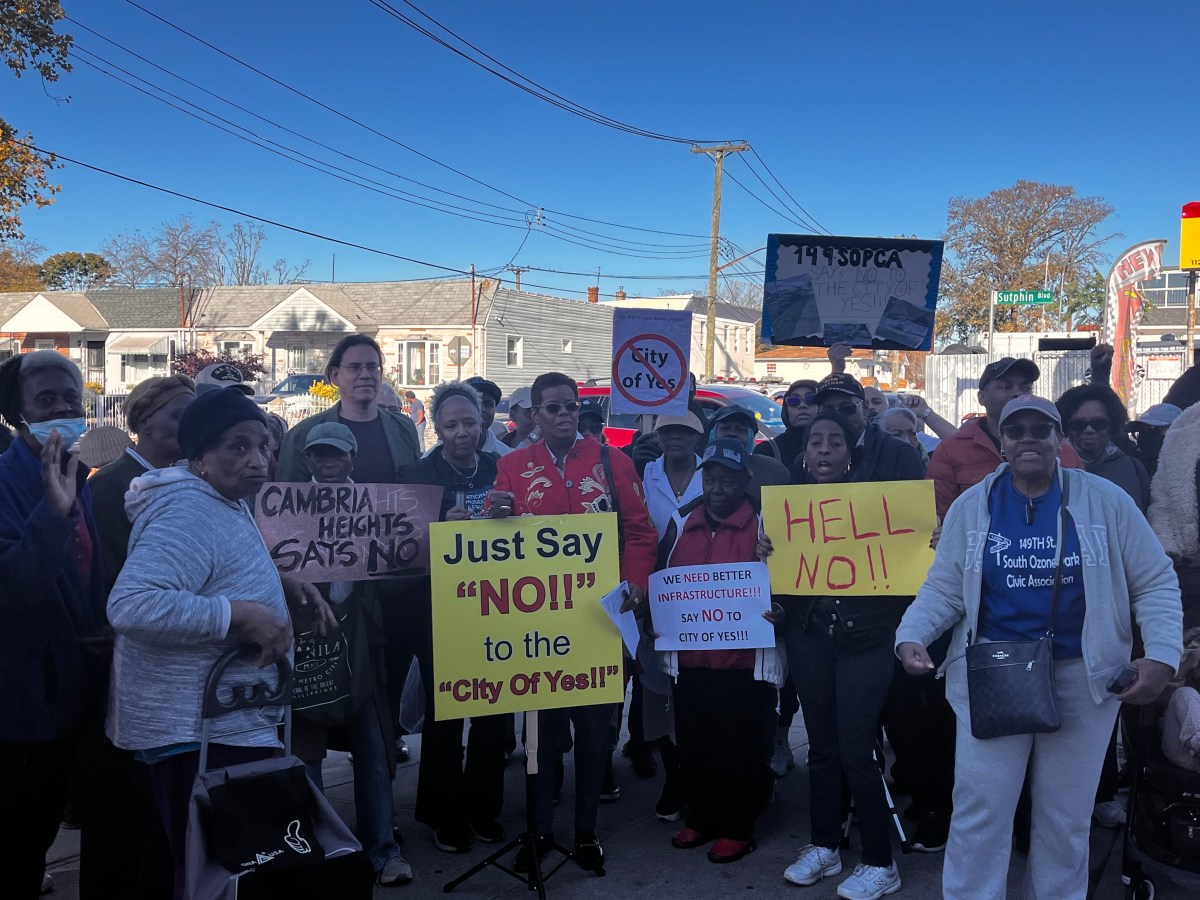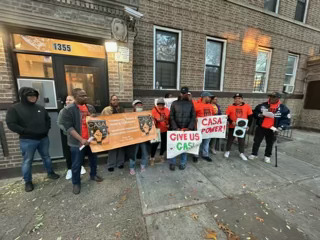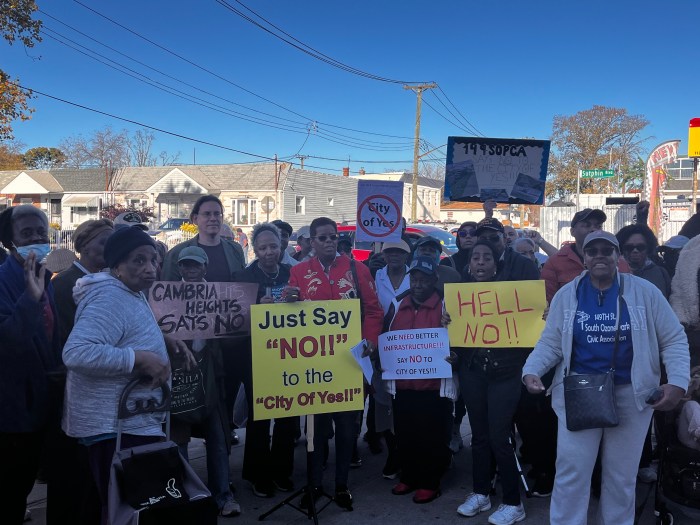BY YANNIC RACK | The city’s Landmarks Preservation Commission (LPC) cleared a major hurdle in the preservation of a historic powerhouse in Hell’s Kitchen last week, but voted not to consider designating a range of other potential landmarks on the West Side.
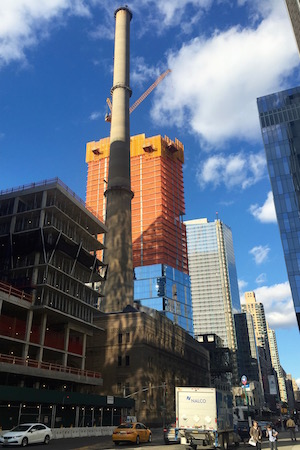
At a public hearing to address its backlog of 95 buildings across the city, the agency selected 30 sites that will be considered for landmark status by the end of the year, after many of them have languished on its calendar for decades.
“The commission has spent months analyzing testimony and conducting further research on these items,” LPC Chair Meenakshi Srinivasan said in a statement after the vote.
“Our actions today represent an important step in addressing this backlog. While challenging, I believe it was very much needed — the commission’s designation process should be open, fair and reasonable, and this is a necessary step to achieve that goal.”
Preservationists across the city rejoiced at the decision to fast-track designation of the former Interborough Rapid Transit Powerhouse on 11th Ave., but also criticized the agency’s inaction on a majority of the proposed properties.
“The powerhouse has been on our wish list for a number of years,” said Kate Wood, the president of Landmark West! “It’s obviously worthy of landmarks designation. It’s a monument of the city,” she added.
“I think that, in the end, it was a very open and good process that helped clear up a longstanding concern that the administration had about the backlog,” agreed Simeon Bankoff, executive director of the Historic Districts Council. “But I would have liked to see many more buildings prioritized for designation,” he added.
The LPC’s decision came after more than two dozen residents and organizations testified in favor of the powerhouse’s preservation at a hearing last November — one of several that were set up to specifically address the commission’s backlog throughout the five boroughs by gathering input from members of the public.
Stretching for a whole block between W. 58th and W. 59th Sts., the Beaux-Arts style powerhouse is one of the more ancient additions to the list. It has been in landmarking limbo for over 35 years — the first time it was considered for designation at a public hearing of the commission was in 1979.
Since then, the agency has considered the building in 1990 and 2009, but both times decided to delay designation because of opposition from Con Edison, which has owned and operated the station since the 1950s.
The plant is currently used as part of the company’s steam system, serving around 1,800 customers in Manhattan — including some of the city’s most recognizable landmarks, like the Empire State Building and Grand Central Terminal, according to a spokesperson.
When it was built in 1904, the building was the largest power station in the world, feeding a total of eight substations to power the signal and lighting systems of the Interborough Rapid Transit (IRT) subway — the city’s first underground transit system.
But Con Ed is vehemently opposed to landmarking the iconic building, on the basis that designation would make it difficult to operate the powerhouse.
“We have a longstanding and productive working relationship with Landmarks staff that has given us the flexibility to maintain and enhance the production of steam and electricity from our 59th Street steam plant,” a Con Ed spokesperson said in a statement after the LPC’s decision. “We would like to continue that relationship with the Landmarks staff while continuing to meet our customers’ energy needs,” he added.
At the hearing last fall, representatives for the company made their position more clear.
“Our 59th Street steam plant is a living and breathing monument to adaptive reuse,” Gus Sanoulis, Con Ed’s Vice President for Steam Operations, told the LPC commissioners then. “We need the flexibility to make changes to the plant’s interior and exterior that enables the cleanest, most efficient, and reliable production of energy,” he added.
But their opponents point out that Con Ed has operated under restrictions for years, while the building has remained on the landmarks calendar (the company has also removed details like cornices and roof tiles from the building, as well as all of the station’s six original smokestacks).
Bankoff said he was pleasantly surprised by the commissioners’ “strong statement” on the building, considering that there is no precedent for landmarking an active power plant.
“I think that was a tough decision, because Con Ed is not in favor of landmarking — and Con Ed is a very potent force,” he said. “They were very vocal in their opposition.”
While the powerhouse will now likely be preserved, most of the properties that were considered did not make the cut.
The 65 buildings that were removed from the calendar last week include the Mission of the Immaculate Virgin West, a three-story building on W. 56th St. that is now part of the nearby High School for Environmental Studies, as well as seven current and former Broadway theaters on W. 42nd St. in Midtown.
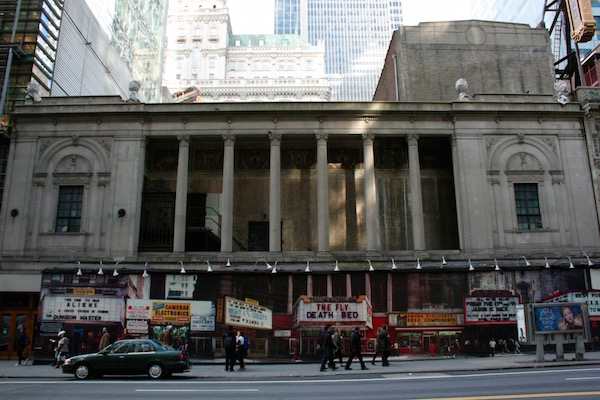
According to an LPC spokesperson, the theaters were not included on the priority list because they are already subject to historic preservation requirements through New 42nd Street, a nonprofit organization that was formed in 1990 to oversee the redevelopment of the historic venues.
The spokesperson also noted that the theaters were removed from the calendar by a No Action letter, which allows them to be reconsidered for designation “without prejudice” in the future.
But the decision didn’t sit well with preservationists like Bankoff, who said that the vote was particularly troubling in light of recent controversy around the Palace Theater on Seventh Ave., which is set to be lifted up 29 feet to accommodate ground-floor commercial space — a concession to developers, according to preservation groups critical of the plan.
“We understand that there already is a mandated role for the commission,” Bankoff said, “but we felt they really should be designated. If we’re living in a world where theaters in the Theater District are seen as ‘in the way,’ I would prefer to have the oversight from the Landmarks Commission.”
The agency had originally announced that it would dispose of its entire backlog of buildings in 2014, but changed gears after the decision prompted an outcry from preservationists across the city.
“I find it deeply disturbing that all 95 of these buildings were going to be de-calendared,” said Wood, of Landmark West! “The fact that 30 of them are supposedly being moved forward says a lot about what we could have lost.”
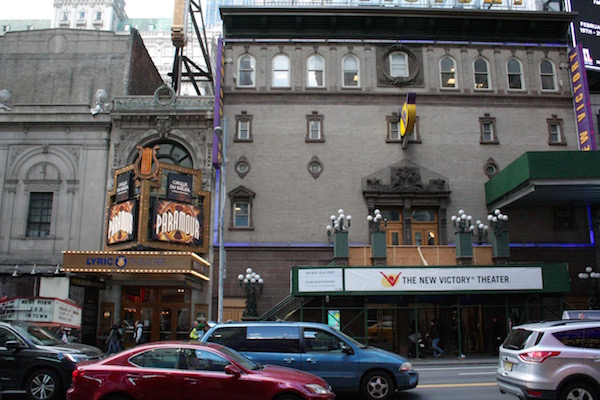
The sites that will be prioritized for landmark status also include three buildings in Brooklyn’s Greenwood Cemetery, the Pepsi Cola sign in Long Island City, Staten Island’s Prince’s Bay Lighthouse, Immaculate Conception Church in the Bronx and the Bergdorf Goodman store in Manhattan.
“Today’s votes mark a real achievement: The Landmarks Preservation Commission is clearing its backlog through a transparent, public, accountable process,” Manhattan Borough President Gale Brewer said in a statement after the meeting.
Brewer, who testified on many of the properties in her borough, especially highlighted the powerhouse.
“The IRT Powerhouse on the West Side and the Loews Theater in Washington Heights are just two of the 30 gems deserving protection,” she said.
All 30 buildings prioritized for designation will now be brought back to the commission for an individual vote by the end of the year, and the agency has said it aims to resolve the backlog by the end of 2016.
Although Con Ed will likely continue to advocate against the landmarking of the powerhouse, preservationists said they were optimistic about their odds.
“I was honestly floored when I saw the powerhouse’s photo up there. It’s long overdue and I’m really happy,” said Alyssa Bishop, who is the president of the Hudson River Powerhouse Group, a non-profit that was founded in 2007 specifically to get the building landmarked.
“We’ve come too far not to be optimistic now,” Bishop said. “The initiative that the LPC took at the hearing was too bold a move for them to back down now.”



